How to fix a leak without dangerous consequences: repair of cast iron heating radiators
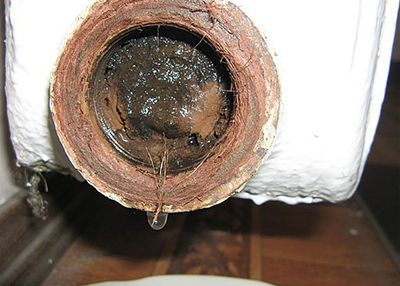
Cast iron radiators are considered a classic for water heating: since its invention in 1857 They are still used in many houses and apartments today.
Corrosion resistance, high heat transfer, low hydraulic resistance, thermal inertness - qualities that ensure demand for these products.
Cast iron radiators have sectional design. Equipped with shut-off devices, plugs, stoppers, nipples, and gaskets.
The products are heavy and are mounted on special wall brackets, but floor-standing radiators on legs are also available. The heaters provide a comfortable mode: up to 35% heat is transmitted by radiation, the rest by convection.
Content
The main causes of malfunctions of cast iron heating radiators
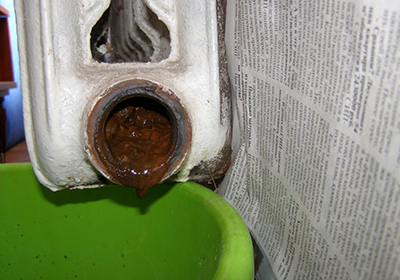
Cast iron is highly durable, the service life of heating products is 25-30 years old, under optimal conditions - 50 years and longer.
But thick-walled cast iron radiators have vulnerable spots: most often, radiators leak between sections, at the joints with pipes, and sometimes fistulas and cracks appear on the cast iron itself.
Main reasons, for which repairs have to be carried out:
- Heavy weight. Depending on the type and manufacturer, the weight of one cast iron section 4.5–7.1 kg, filling volume 1-4 liters, the standard set consists of 4–10 elements. If the installation is unskilled and the number of brackets is incorrectly calculated, the radiator becomes skewed. As a result, the connecting elements suffer, and metal fatigue occurs. In places where there is no coolant, corrosion appears, then a fistula.
- Instability to water hammer and high pressure. When the obstacle is suddenly removed, the liquid gains enormous speed and rushes to the area of lowest pressure. The power of the water hammer in the heating circuit exceeds the force of a hammer blow. A sudden change in pressure or its high values threaten to depressurize the heating system - leaks most often occur at the joints of the radiator parts.
- Dirt and trash. Elements of domestic cast iron batteries are produced by casting. The technology is such that the surface remains rough, which is excluded in imported analogues.
Due to the graininess, rust particles and suspended matter, which fill the coolant, settle on the walls. Gradually, the channels become clogged and cannot withstand the water pressure - the battery can burst from pressure or water hammer. To prevent repairs, regular flushing of the system is required.
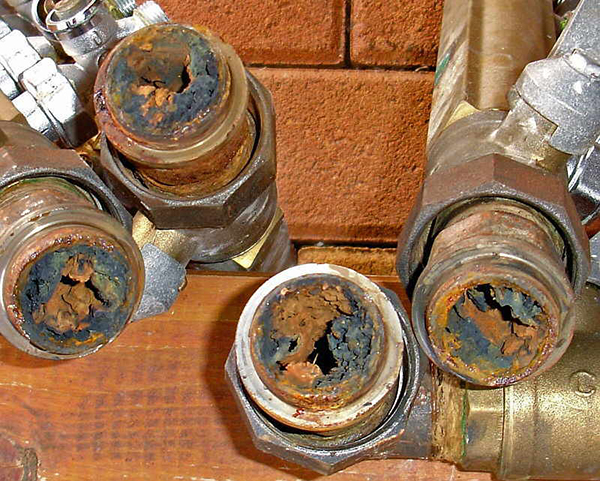
Photo 1. Elements of a cast iron radiator clogged with rust and debris, which is why the radiator cannot cope with the water pressure.
- Wear of inter-section gaskets. The strength of detachable connections is always inferior to monolithic structures. Intersectional gaskets and threaded nipples of batteries wear out faster than cast iron, are more exposed to temperature and pressure. To avoid leaks and emergency repairs - do not forget about prevention: after the heating season, check the joints and change the gaskets.
Tools and materials for eliminating defects with your own hands
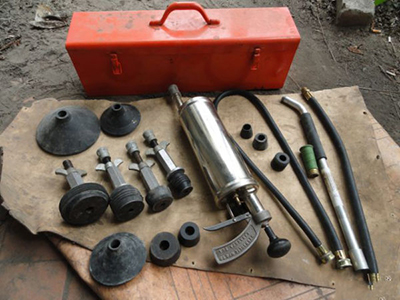
Minor repairs of cast iron radiators are possible without the involvement of plumbing experts, with your own hands. Depending on the method of restoration work, you will need:
- metal cable or sandpaper - to clean the defect area;
- for repairing section joints: a clamp is a fastener consisting of two plates with rubberized interiors and connected with bolts;
- to eliminate fistulas: cold welding for radiators - a plastic mass designed for fixing metal parts without thermal heating;
- degreasing solvent: gasoline, acetone, white spirit and others;
- one of the sealants: powder iron, polymer, cold welding, epoxy resin;
- bandage or strips of cloth;
- spanner for the size of the clamp fasteners, pliers;
- rags, oilcloth, container for collecting water.
Attention! In case of emergency repairs, a clamp is used instead of a clamp. a piece of thin rubber, cut from a car inner tube or elastic rubber bandage and wire for fixation.
To flush cast iron batteries, prepare an adjustable pipe wrench, caustic solutions soda 10%, citric acid (50-60 g per liter) or a special liquid for heat exchangers.
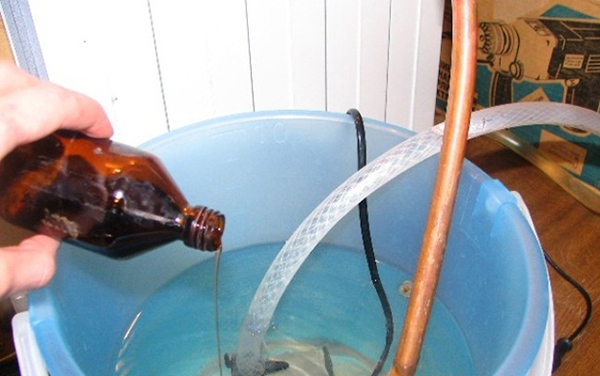
Photo 2. Preparing a solution for flushing a cast iron radiator, adding soda and citric acid.
Repair and cleaning of battery leaks
The actions to eliminate the defect depend on its location and the severity of the breakdown. In all cases, repairs begin from preparing the workplace.
Attention! If the leak is significant, Call the emergency team. Trying to tighten a crack under pressure with a clamp is dangerous to your health, as it can cause the radiator to rupture.
Sequence of work when repairing section joints:
- To avoid flooding your neighbors, cover the floor with oilcloth, Prepare a container and a rag to collect the water.
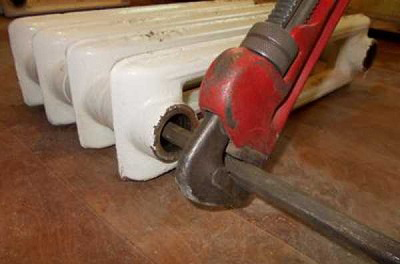
- Use a fine wire or sandpaper to clean the leaking area. remove paint down to bare metal. Degrease the cast iron surface thoroughly.
- Seal the leak. Apply epoxy resin or putty to fabric strips or bandages. Wrap the defective area in 2-5 turns, do not spread the top layer.
- Cold welding is kneaded by hand until smooth., pressing firmly, apply without fabric.
- Put on the clamp, placing the clamps on the side of the battery that is leaking back. Tighten the nuts.
If you are using rubber instead of a clamp to repair a joint between cast iron radiators, wrap it around the leaking area and tighten it with wire using pliers.
Reference! The clamp is used without preliminary application of sealant to quickly eliminate minor leaks. Rubberized base ensures tightness of connections.
If a fistula has formed on a cast iron surface, for repairs, place it on a cleaned and degreased area. apply cold welding by pressing. An unconventional solution to the problem is to hammer a wooden plug into the hole or screw in a screw, and seal it with sealant on top.
How and with what to flush the radiator?
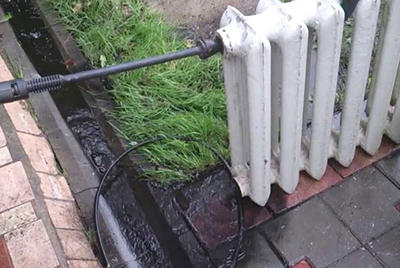
Before washing the battery, disconnect it from the system using pipe wrench #3 (gas) and remove all the plugs. It is most convenient to carry out the flushing procedure in a cast iron bath. To prevent damage to enamel, the bottom is covered with rags.
When disconnecting the battery from the heating network, place a container underneath, as there may be liquid left in the system.
Work order:
- Filling with hot water. To wash the structure, use a flexible shower hose. Supply water under pressure, direct it to all sections, shake and turn the radiator regularly. Large blockages are removed with a stiff wire. Perform the procedure until the flowing water becomes transparent.
- Pouring the solution. To flush, plug all openings, fill with hot (90ºC) 10% solution of caustic soda or concentrated dishwashing detergent, leave for 40–60 minutes. The mixture will remove the remains of organic contaminants and open access to mineral deposits. Shake the product, then drain the liquid.
- Descaling. Pour in the heated up to 60–70ºC acid solution, leave for a while from 3-6 hours to 2 days. Tap the battery with a wooden hammer periodically. At this stage of washing, you can use citric acid, vinegar 9% in proportion with water 1:5. A special liquid for flushing heating systems and a product for car radiators are also used, but in these cases the period of action is determined by the instructions.
- Re-rinse with water. To help the softened scale wash out better, tap the battery body while simultaneously rinsing it with a strong stream of water. Repeat the procedure until all the deposits are removed.
Important! For efficient heat transfer, flush cast iron radiators once a day. at 3-4 years old. Thoroughly wash away any chemical solution residues as they cause oxidation, metal destruction and the formation of a rust layer.
How to clean the structure without removing it?
To clean cast iron batteries without dismantling them, without removing them, use hydropneumatic and electrohydropulse devices.
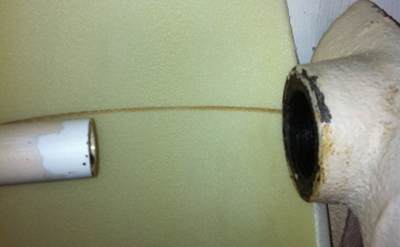
First devices create a shock wave of high kinetic energy that tears away solid deposits.
Devices of the second type Using an electrical impulse, they destroy mineral salts deposited on the walls.
Both methods are safe. for cast iron, are highly effective, remove blockages that cannot be cleaned with regular washing, but to clean them this way, special equipment is required.
Useful video
In the video you can see how the process of washing batteries takes place.
Summary: How should you wash to maintain the functionality of the system?
Repairing cast iron radiators is possible on your own, but only for minor defects. If you do not have the necessary tools or lack experience, contact professional plumbers.
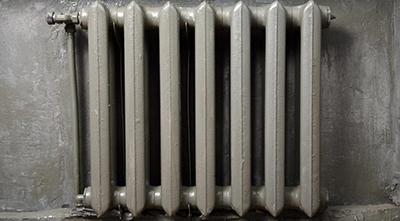
In addition to state-owned companies, there are many private companies. with a 24-hour emergency call service.
All home remedies for leaks and repairs are temporary.
Therefore, after the end of the heating season invite specialists, to replace damaged sections or the entire radiator. The faster this is done, the safer your home will be.







